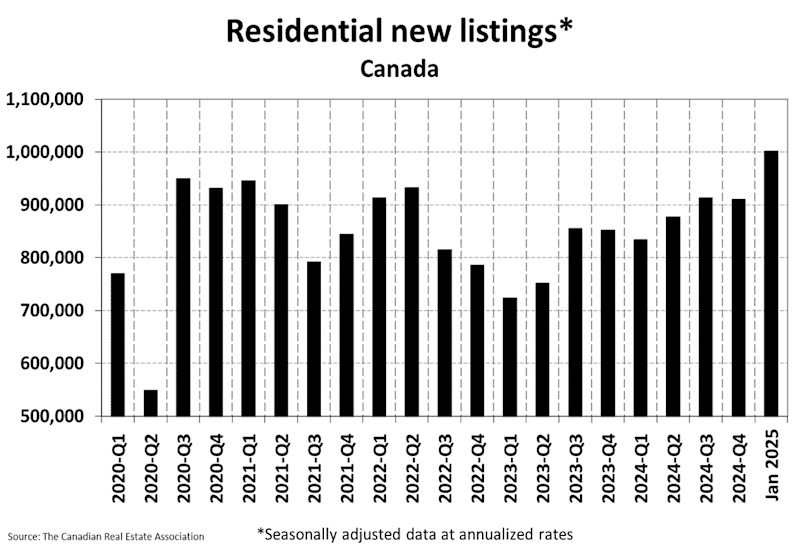The U.S. Federal Reserve’s stance on interest rates has once again become a critical topic for economists, investors, and homebuyers alike. A recent report from the Financial Post highlights that a hotter-than-expected U.S. inflation rate is raising concerns about the Federal Reserve’s next moves, potentially delaying anticipated rate cuts or, in a more extreme scenario, even leading to further hikes.
For Canadians, particularly those involved in the real estate market, the implications of U.S. monetary policy extend far beyond American borders. The Bank of Canada often aligns its interest rate decisions with economic trends in the U.S., meaning that any shift in the Fed’s approach could significantly impact mortgage rates, home prices, and overall market activity here at home.
Why Are Interest Rates So Important?
Interest rates are a fundamental driver of real estate activity because they determine the cost of borrowing. Higher rates mean higher mortgage payments, reducing affordability for buyers and often cooling housing demand. On the flip side, lower rates make borrowing more attractive, stimulating home purchases and driving property values upward.
Over the past two years, both the Federal Reserve and the Bank of Canada aggressively raised interest rates to combat inflation. While the Bank of Canada recently held its benchmark rate steady at 5%, many market participants were expecting cuts as early as mid-2024. However, new data out of the U.S. suggests that inflation remains stubbornly high, raising concerns that rates might stay elevated for longer than anticipated.
Some analysts are now even speculating about the possibility of another rate hike in the U.S., which could pressure the Bank of Canada to reconsider its strategy.
How Could This Affect the Canadian Real Estate Market?
If the Fed holds rates higher for longer, or even raises them again, the Bank of Canada may need to follow suit to maintain currency stability and manage inflation. This could have several direct and indirect effects on the Canadian housing market:
1. Higher-for-Longer Mortgage Rates
Many buyers, especially first-time homebuyers, have been waiting for interest rates to come down to improve affordability. However, if rate cuts are delayed or reversed, mortgage rates will likely stay elevated, keeping monthly payments high and potentially pricing some buyers out of the market.
For example, a homebuyer looking to secure a $700,000 mortgage at a 5.5% interest rate today would pay significantly more per month compared to someone who secured the same loan at 2.5% in 2021. Prolonged high rates could discourage new buyers from entering the market, leading to slower sales activity.
2. Continued Pressure on Home Prices
Although Canadian home prices have shown some signs of stabilization, prolonged high interest rates could weigh on demand, keeping price growth subdued or even triggering price declines in certain markets. Sellers looking to offload properties may need to adjust their expectations and be more flexible with pricing to attract buyers.
Luxury properties and investment-driven markets such as pre-construction condos, may be particularly sensitive to borrowing costs, as these segments often rely on leveraged investments.
3. Investment Uncertainty
For real estate investors, higher borrowing costs could impact profitability. Those who rely on financing to purchase rental properties will face higher mortgage payments, potentially reducing cash flow from rental income. This may lead to some investors postponing purchases or shifting strategies toward cash-heavy deals.
However, uncertainty also creates opportunities. Investors with strong capital positions may find favorable deals, especially if prices soften and some sellers need to offload properties quickly.
4. Stronger Canadian Dollar Could Impact Foreign Buyers
If the Bank of Canada keeps its rates in line with the U.S. Federal Reserve, the Canadian dollar could strengthen against the U.S. dollar. While a stronger loonie may benefit importers, it could make Canadian real estate less attractive for foreign buyers, who often take advantage of currency fluctuations when investing in markets like Toronto and Vancouver.
What Should Buyers, Sellers, and Investors Do Now?
With uncertainty surrounding interest rates, it’s crucial to have a well-thought-out strategy for navigating the real estate market.
For Buyers:
- Be realistic about affordability: If you’re waiting for rate cuts, be aware that they may take longer than expected. Consider locking in a competitive fixed-rate mortgage if you find the right property.
- Consider alternative financing options: Work with mortgage brokers to explore rate buy-downs, extended amortization periods, or hybrid mortgage structures.
- Focus on long-term value: Rather than timing the market, focus on properties with strong fundamentals in desirable locations.
For Sellers:
- Price strategically: Overpricing in a high-interest rate environment can lead to prolonged market exposure and potential price reductions. Work with a knowledgeable real estate professional to set a competitive asking price.
- Highlight affordability incentives: Offering buyer incentives, such as covering closing costs or helping with mortgage rate buy-downs, can attract more interest.
- Be patient but proactive: The market may take longer to absorb listings, so flexibility with negotiations can be key.
For Investors:
- Look for distressed sales: Higher borrowing costs may force some sellers to offload properties at a discount. Keep an eye on motivated sellers and off-market opportunities.
- Prioritize cash flow: In a higher-rate environment, focus on rental properties that generate strong cash flow rather than relying on appreciation.
- Diversify your portfolio: Consider different asset classes, such as commercial properties or multi-family units, which may offer better returns than single-family homes in certain areas.
Final Thoughts
While the U.S. inflation report has cast doubt on the timing of rate cuts, real estate remains a long-term investment. Markets are cyclical, and interest rates will eventually decline, but when and by how much remains uncertain.
For buyers, sellers, and investors in the Greater Toronto Area and beyond, the key to success lies in staying informed, being flexible, and working with experienced real estate professionals who understand the evolving market conditions.
Need guidance on your next real estate move? Contact Ali Bolourchi and his expert team today!
☎️ CALL US 416-886-2000
🌐 Visit us at GTALuxuryHomes.ca





















